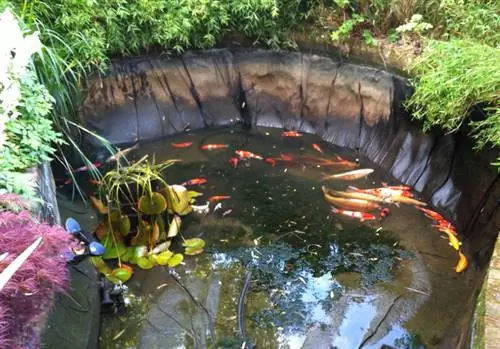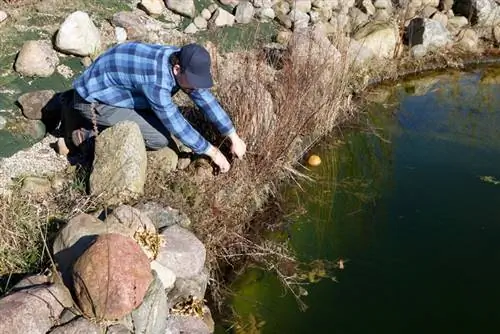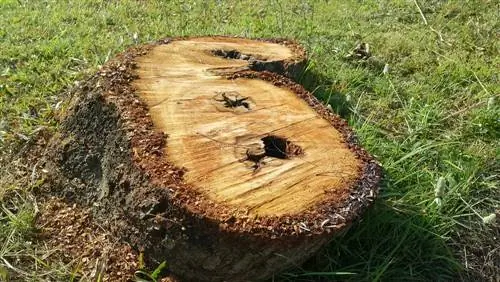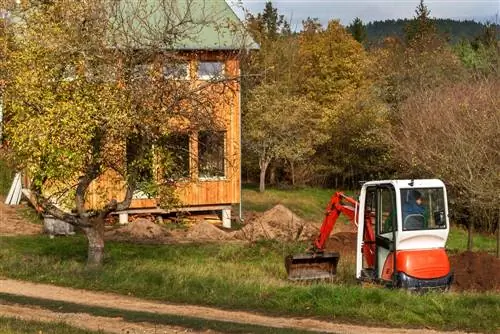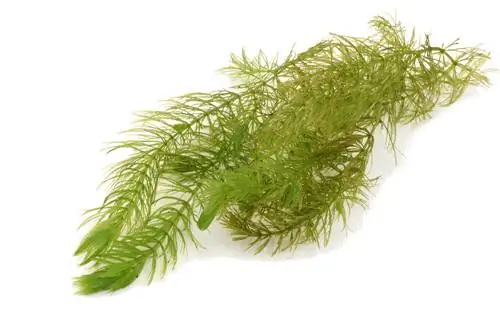- Author admin [email protected].
- Public 2023-12-16 16:46.
- Last modified 2025-01-23 11:21.
Mull, autumn leaves and excretions from the pond inhabitants ensure that the pool floor regularly gets dirty, which has a negative impact on the water quality. It is therefore necessary to thoroughly desludge the garden pond once a year, but without making it completely sterile.

How can I effectively de-silt my garden pond?
To remove sludge from a garden pond, you should pump out the water in spring, remove plants and algae and remove the sludge with a shovel, bucket, wheelbarrow or pond vacuum. It is important not to remove all of the sludge, as it contributes to the biological balance.
Over the course of the year, quite large amounts of sludge accumulate from leftover food, dead plant parts and fish excreta, which settles on the bottom of the pond and creates cloudy, green water. Even with otherwise exemplary pond care, you will hardly be spared having to remove this debris manually; the ideal time for this is the beginning of spring.
Preparation for removing mud
For relatively simple and, above all, complete cleaning, it makes sense not only to pump the pond completely dry, but at least the large plants should also be removed from the pool. On this occasion, it makes sense to cut back the aquatic plants that have grown too lushly, to transplant individual plants to another location and to remove the algae, especially on the edges of the banks.
Desludging and cleaning the pond basin
Now you have the option of using a special pond vacuum cleaner (€124.00 on Amazon) to remove sludge. Appropriate devices can be rented from specialist retailers or any larger garden center and are either equipped with a larger collecting container or drain the sludge directly outside the pond edge via a drain hose. Depending on the design and model, the entire amount of water does not have to be pumped out when removing sludge with a vacuum cleaner, but the traditional method of cleaning using a shovel, bucket and wheelbarrow is easier and more thorough.
Some data from mud vacuum cleaners for smaller ponds with low pollution:
- Power consumption: between 1,400 and 1,800 watts;
- Tank size: 30 to 80 l (also two-chamber container) or direct drain pipes;
- Suction height: two to four meters;
- current prices: between just under 100 to 300 euros;
- Empty weight: 4 to 15 kg
Garden pond cleaning and ecosystem
Apart from the fact that the removed sludge is ideal for adding to garden compost, you should not completely remove it from the garden pond. Ultimately, it forms a vital root base for aquatic plants and contributes to the biological balance in the ornamental pond. Excessive cleanliness would therefore be out of place, because nature is quite capable of regulating itself.


